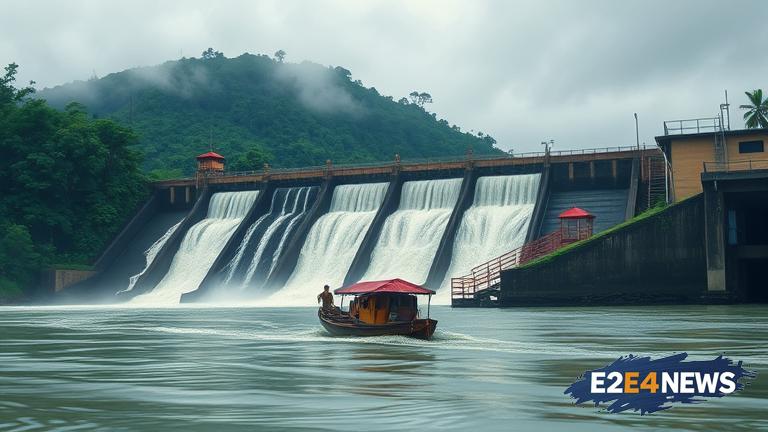The recent heavy rainfall in Luzon has led to the release of water from five major dams in the region, sparking concerns among local communities. The dams, which include the Angat, Ipo, La Mesa, Magat, and Pantabangan dams, have been releasing excess water to prevent overflow and potential damage to their structures. However, this has resulted in increased water levels in nearby rivers and streams, posing a threat to communities located downstream. The Philippine Atmospheric, Geophysical and Astronomical Services Administration (PAGASA) has warned of potential flash flooding and landslides in affected areas. Local authorities have issued evacuation warnings to residents in low-lying areas, advising them to seek higher ground and safety. The release of water from the dams has also affected agricultural areas, with farmers reporting damage to their crops and livestock. The National Disaster Risk Reduction and Management Council (NDRRMC) has been monitoring the situation and providing assistance to affected communities. The agency has also warned of potential power outages and disruptions to communication services. The heavy rainfall has been caused by a low-pressure area that has been affecting the region for several days. The weather system has brought heavy rain and strong winds, resulting in widespread damage and disruption. The government has assured the public that it is doing everything possible to mitigate the effects of the flooding and ensure public safety. However, many residents have expressed concern and frustration over the lack of preparedness and warning from authorities. The situation has highlighted the need for improved disaster preparedness and mitigation measures in the country. The government has been criticized for its slow response to the crisis, with many calling for more effective and efficient measures to address the situation. The release of water from the dams has also raised concerns about the potential impact on the environment and local ecosystems. The increased water levels have affected aquatic life and habitats, and there are fears of long-term damage to the environment. The situation is being closely monitored by environmental groups and agencies, which are calling for more sustainable and environmentally-friendly solutions to manage water resources. The government has announced plans to conduct a thorough assessment of the situation and implement measures to prevent similar incidents in the future. The public has been advised to remain vigilant and take necessary precautions to ensure their safety. The situation is a reminder of the importance of disaster preparedness and the need for effective measures to mitigate the effects of natural disasters. The government and relevant agencies must work together to address the situation and ensure public safety. The release of water from the dams is a complex issue that requires careful management and planning to prevent similar incidents in the future. The situation has highlighted the need for improved coordination and communication among government agencies and stakeholders. The public must also play a role in disaster preparedness by taking necessary precautions and staying informed about the situation. The government has assured the public that it is committed to finding solutions to the problem and ensuring public safety. The situation is being closely monitored, and updates will be provided as more information becomes available.





